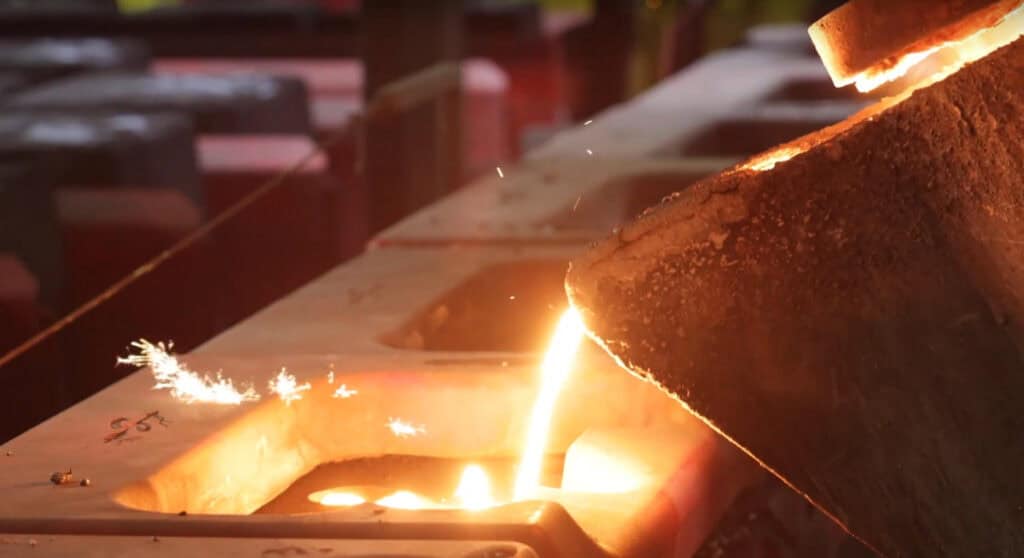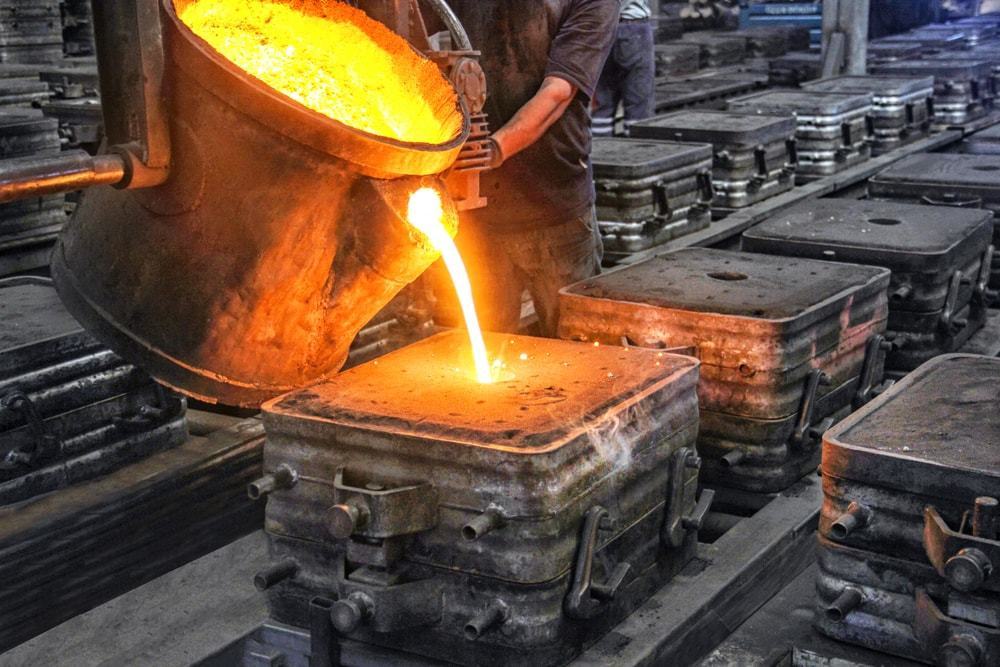Ways modern Metal Foundry innovations boost productivity in manufacturing
Wiki Article
Revealing the Intricacies of Style and Manufacturing at a Metal Foundry
The design and manufacturing procedures at a metal foundry involve a series of detailed steps. Each stage, from choosing resources to melting and casting, plays a critical role in the final item. Metal Casting. Accuracy and top quality control are critical in this industry. As technology advances, new innovations are arising. These advancements may redefine standard techniques. What ramifications do these adjustments hold for the future of metal shops?The Melting Process: Transforming Raw Products Into Fluid Metal
The melting process works as the important very first step in changing raw products right into liquid steel, a procedure necessary for foundry operations. This stage starts with the cautious option of metals, which may include copper, iron, or aluminum, depending upon the wanted end product. Each product is reviewed for pureness and structure to ensure ideal melting problems.
As the steels reach their melting factor, they transform from strong to liquid, enabling more refinement. This process can also consist of the elimination of pollutants through slag formation, ensuring the high quality of the liquid metal. Ultimately, the successful completion of the melting process lays the structure for succeeding metalworking procedures.
Molding Strategies: Shaping Metal With Accuracy
Complying with the melting process, the following stage in metal foundry procedures involves molding strategies that shape the liquid steel into desired forms. Different methods are employed, each selected based on the specific needs of the task. Sand spreading, one of one of the most common methods, uses a combination of sand and binder to create molds that can be quickly shaped and recycled. An additional approach, financial investment casting, involves developing a wax pattern that is coated in a ceramic covering, enabling for complex designs and high precision.Die spreading, on the other hand, uses high-pressure to inject liquified steel into steel molds, causing consistent and resilient items. Furthermore, the choice of molding technique influences the cooling rate, surface area finish, and dimensional accuracy of the end product. Comprehending these methods is necessary for enhancing style and guaranteeing the effective production of steel components tailored to specific applications.
Casting Techniques: From Prototype to Manufacturing
Various spreading techniques are utilized in metal foundries to change from prototype advancement to major production. Amongst these approaches, sand casting attracts attention for its versatility and cost-effectiveness, making it ideal for both large and little production runs. Investment casting, understood for its accuracy, is frequently utilized for intricate geometries, enabling great information in the final item. Pass away casting, suitable for high-volume production, utilizes liquified steel injected right into molds, giving outstanding surface area finish and dimensional accuracy.
Quality Assurance: Guaranteeing Quality in Every Pour
While the spreading procedure can differ considerably in between approaches, maintaining rigorous quality assurance is vital to determine that every put meets the required criteria. Quality control in a metal foundry incorporates a series of systematic checks and evaluations made to identify defects early in the production procedure. This includes careful assessments of raw products, surveillance of melting temperatures, and analyses of mold and mildew integrity.Foundry personnel employ numerous screening techniques, such as non-destructive testing and dimensional verification, to ascertain that spreadings accomplish wanted specs. Furthermore, adherence to established sector requirements and accreditations improves the integrity of the final item.
Responses loopholes are additionally vital; any type of inconsistencies noted during high quality assessments are examined to improve procedures and alleviate future mistakes. Inevitably, a culture of quality assurance cultivates not only client fulfillment yet also an online reputation for excellence in the competitive landscape of metal manufacturing.
Technologies and Technologies: The Future of Metal Foundries
The landscape of metal foundries is swiftly evolving, driven by developments in innovation and cutting-edge techniques. Automation and robotics are transforming conventional process, improving effectiveness and accuracy throughout manufacturing. Automated putting systems and robotic arms decrease human mistake, resulting in better results. Furthermore, the integration of expert system is allowing anticipating upkeep, optimizing equipment efficiency, and lessening downtime.Additive production is arising as a game-changer, permitting rapid prototyping and the production of intricate geometries that were formerly unattainable. This technology facilitates the personalization of steel components, accommodating particular customer requirements without substantial dead time.
Sustainability is additionally a crucial emphasis, with factories taking on greener practices, such as recycling scrap steel and utilizing energy-efficient heating systems. These innovations not only enhance productivity yet additionally line up with international efforts in the direction of ecologically liable manufacturing, making certain the future of metal shops continues to be affordable and durable in a changing industrial landscape.
Regularly Asked Questions
What Sorts of Metals Are Frequently Used in Shops?
Common steels utilized in shops include light weight aluminum, cast iron, bronze, steel, and brass (Aluminum you can try here Casting). Each metal possesses special properties, making them appropriate for numerous applications in markets such as automobile, aerospace, and building, among othersJust How Do Foundries Handle Waste and Environmental Influence?
Factories take care of waste and environmental influence by implementing reusing programs, utilizing sophisticated purification systems, and adhering to visit this site strict regulative criteria. They commonly invest in lasting innovations to lower discharges and promote responsible source usage throughout their operations.What Precaution Are in Place for Workers?
Shops execute different precaution for workers, consisting of personal protective tools, proper air flow systems, routine safety training, emergency situation action protocols, and stringent adherence to work wellness laws to decrease risks connected with harmful products and tools.How much time Does the Entire Manufacturing Process Typically Take?
The entire production process generally takes several weeks, depending upon the intricacy of the layout and the products used. Factors such as mold preparation, melting, and cooling time greatly affect the general duration of production.What Are the Key Tests Encountered by Metal Foundries Today?
Metal factories today face obstacles such as increasing material prices, fluctuating demand, environmental laws, experienced labor scarcities, and maintaining quality assurance. These issues make complex production performance and success in a significantly affordable market.The design and production procedures at a metal foundry involve a series of intricate actions. The melting process offers as the important initial action in changing raw materials right into fluid steel, a treatment crucial for foundry procedures. Adhering to the melting process, the following stage in metal foundry operations includes molding strategies that form the liquid metal right into desired types. Many spreading methods are used Going Here in steel shops to change from prototype growth to full-blown manufacturing. Quality control in a metal foundry encompasses a series of systematic checks and evaluations created to recognize flaws early in the production procedure.
Report this wiki page